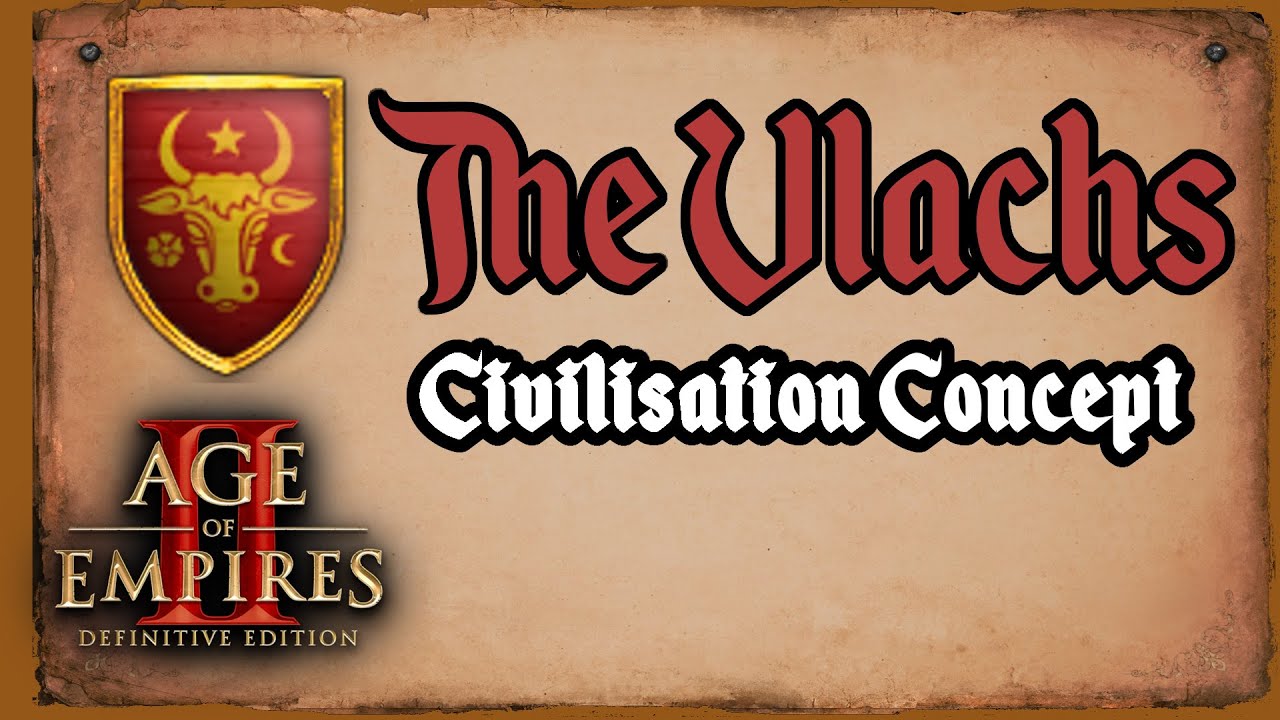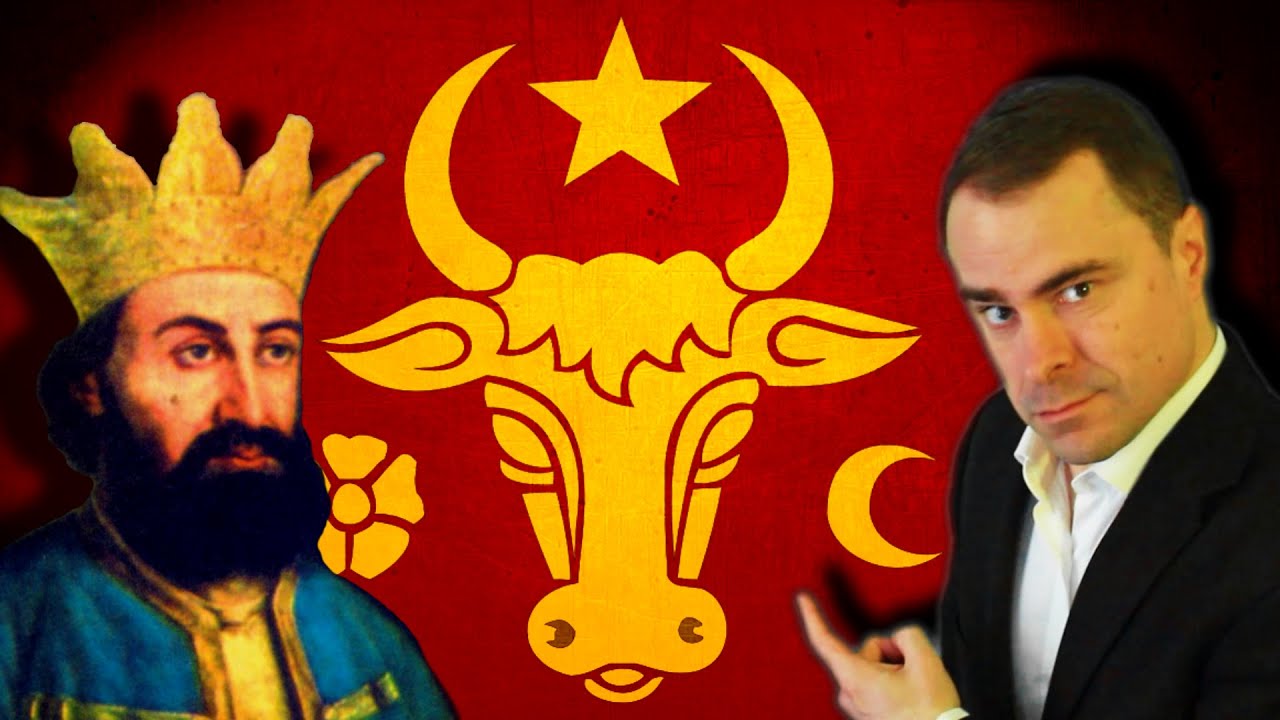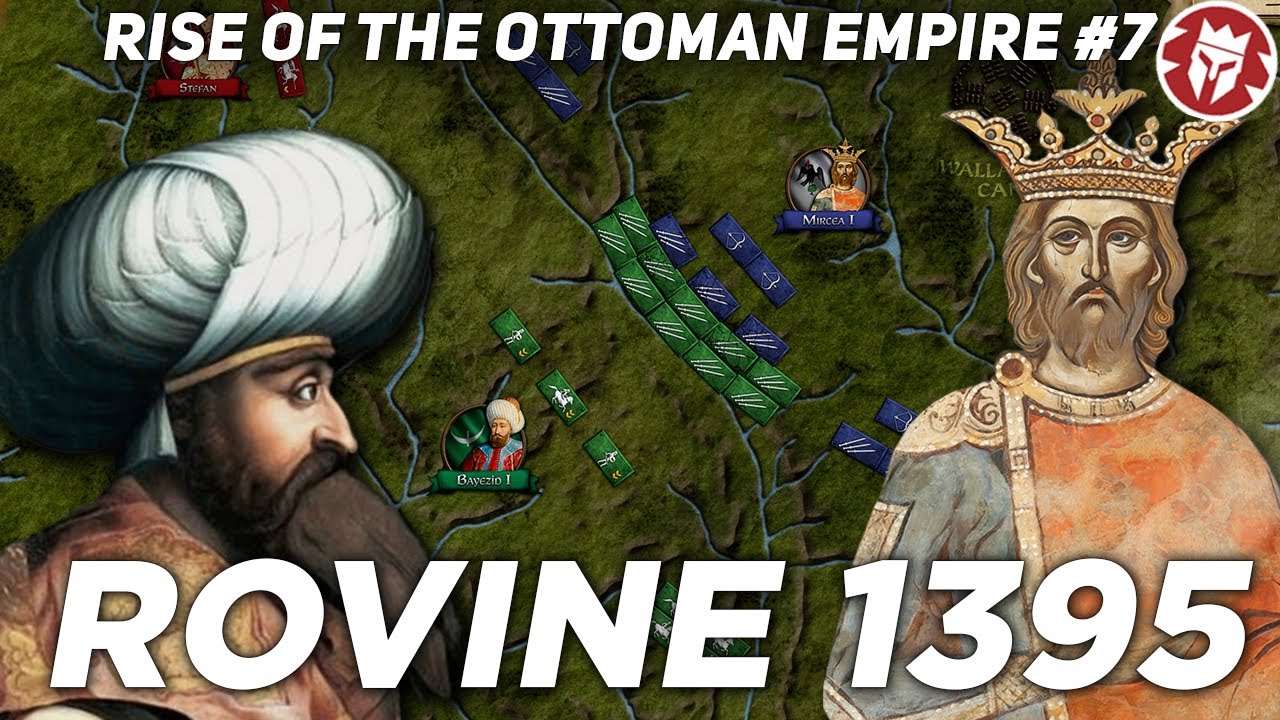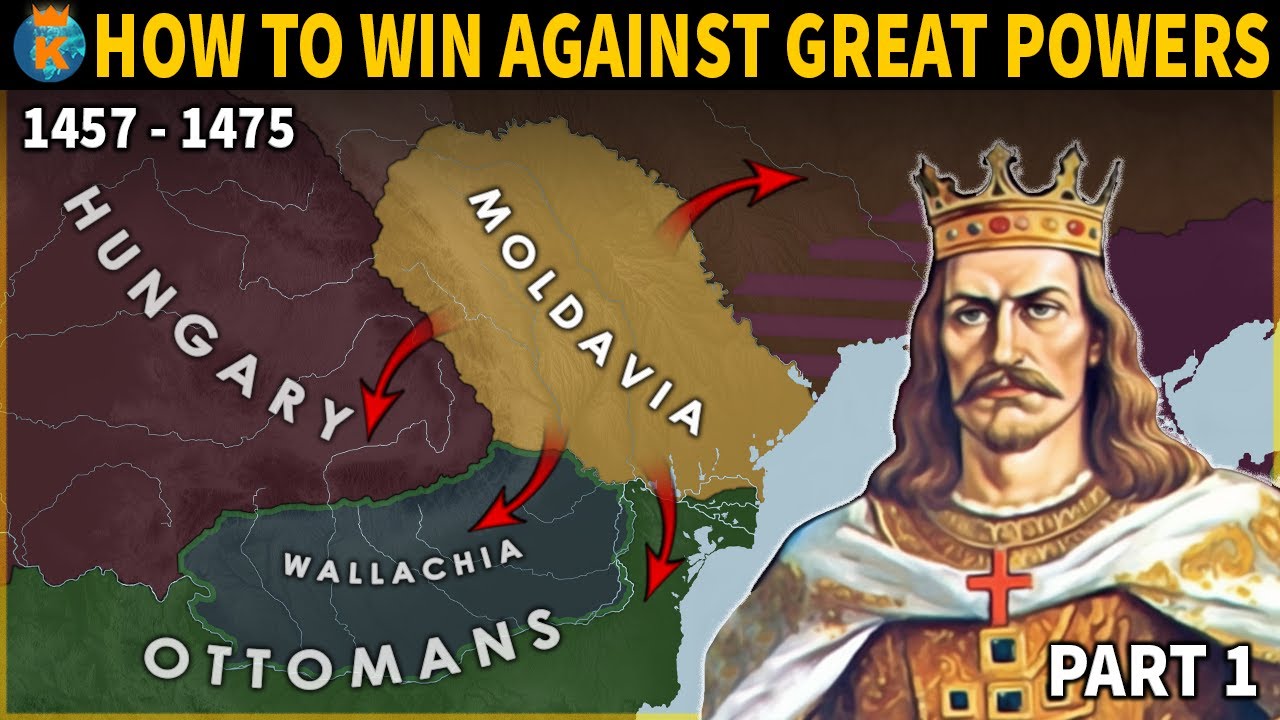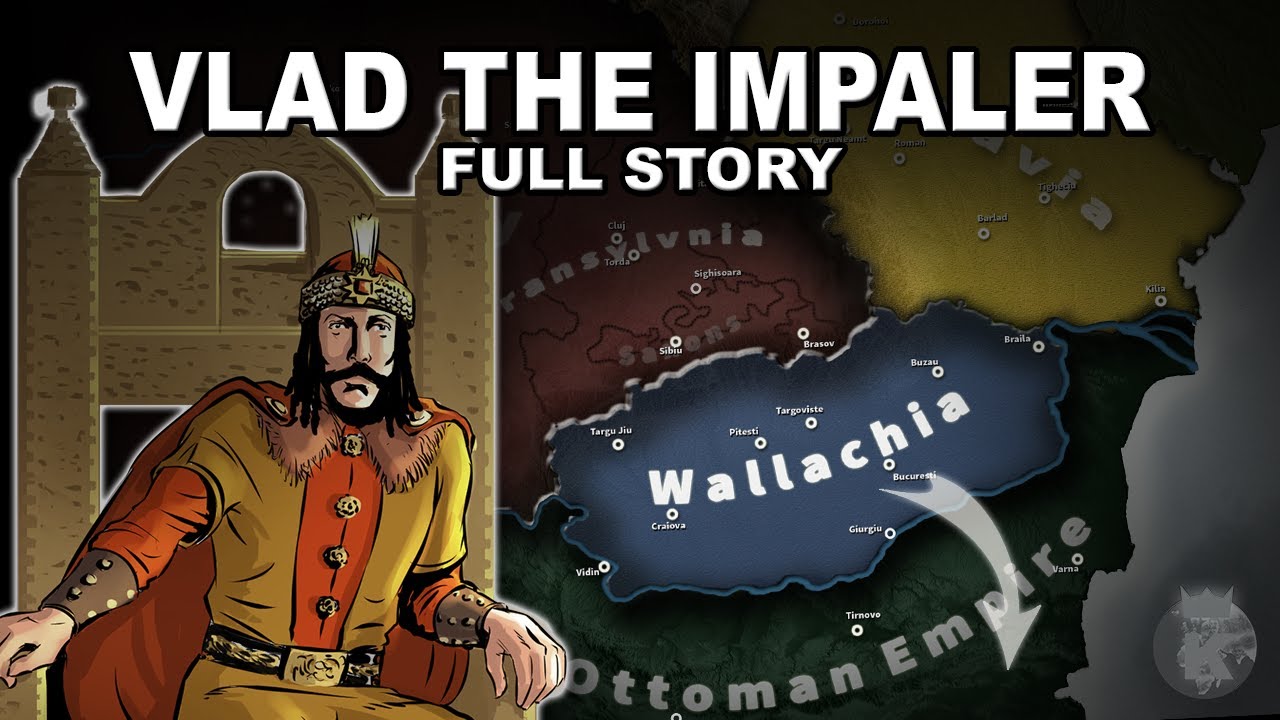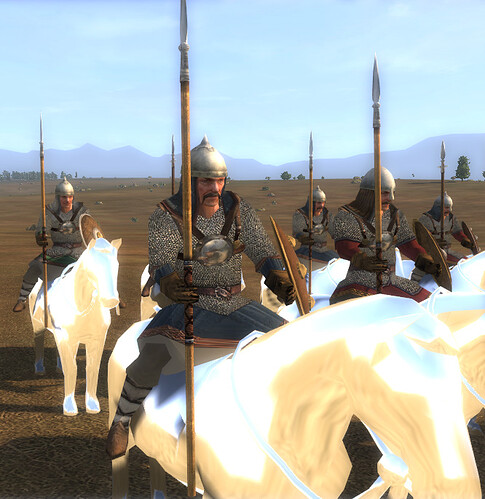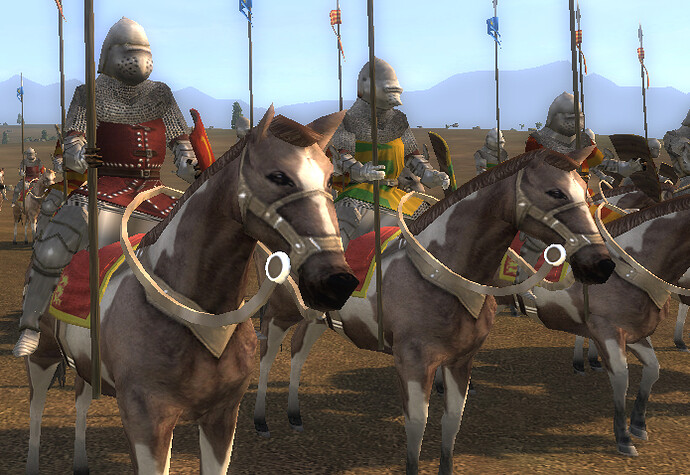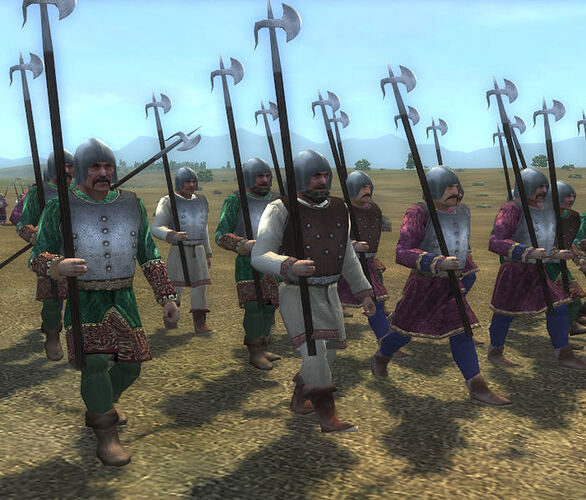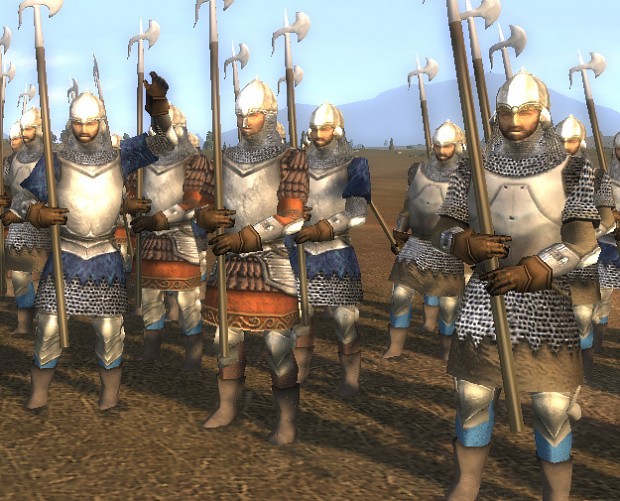ROMANIAN CIV POSSIBLE DESIGN
DETAILS:
Name? Romanians in the middle ages used to be called Vlachs, but they called themselves Romanians, this is not the case anymore but back then it was like how Germany calls itself “Deutschland” but it is called different things by other nations.
Looks? Considering that Romania is Eastern European like the Magyars and Slavs most buildings and units will look the same.
Culture? Like the Slavs, the Romanians had Boyars as nobles and Orthodoxy as religion, the Romanian culture was influenced by the Slavic and Orthodox Christianity comes from the Byzantines.
Speciality? Romanians were used to being outnumbered in most of their battles and usually used hit & run and encirclement tactics. In Moldavia, every peasant was military trained.
Language? You can use modern Romanian, unlike English that changed so much that Old English is a completly different language, Old Romanian and Modern Romanian are mutually intelligible.
AI Rulers? In chronological order:
- Basarab I the Founder (1310 - 1352) - Founder of Wallachia.
- Bogdan I the Founder (1307 - 1367) - Founder of Moldavia.
- Mircea the Elder (1355 - 1418) - Prince of Wallachia, great-grandson of Basarab I.
- Vlad II the Dragon (1395 - 1447) - Prince of Wallachia, son of Mircea the Elder, father of Vlad the Impaler.
- Vlad III the Impaler (1431 - 1476) - Prince of Wallachia, Dracula’s campaign is about him.
- Radu the Fair (1437 - 1475) - Prince of Wallachia, younger brother of Vlad the Impaler.
- Stephen III the Great (1435 - 1504) - Prince of Moldavia, cousin of Vlad the Impaler.
- Alexandru Lapusneanu (1499 - 1568) - Prince of Moldavia.
- Matei Basarab (1588 - 1654) - Prince of Wallachia.
- Vasile Lupu (1595 - 1661) - Prince of Moldavia.
- Michael II the Brave (1558 - 1601) - Prince of Wallachia and Moldavia.
- Constantin Brancoveanu (1654 – 1714) - Prince of Wallachia.
- Dimitrie Cantemir (1673 – 1723) - Prince of Moldavia.
POSSIBLE HISTORICAL DESIGN CONCEPTS:
- Poor siege (Romanians not known for their catapults or great siege)
- Poor ships (again, only having little sea access and a very modest navy needed for trade)
- No chemistry (was a bit late to the part in this department, only around 1600s)
- Weak monks (being orthodox, the church didn’t have such influence as it did for catholics or even the Russian church).
- Access to Arbalest, Champions, Halberdier, Hussar, Paladin (being often outnumbered, the main strength of the Wallachian and Moldavian armies were their diversity, having access to all of these allows for that even if not all of them get a bonus)
- Bonuses to Paladins & Cost Reduction to Halberdiers (the main focus was on the heavy Cavalry who would receive the finest armors from Western Europe and peasantry who were forced to bear arms and learn to fight otherwise they would be senteced to death)
- Late Game civ (Wallachians and Moldavians would almost always pick their battles to ensure victory as they were often outnumbered, I think this translates well to having a worse early & mid games where the enemy has the advantage, making the Romanians a target as historically they were more often than not invaded than invading. You just have to ressist until the late game. Which kind of mirrors a lot of Wallachia and Moldavian wars where they were invaded and just had to ressist until they could build up stronger forces)
- Good troops but no economic bonuses until late (this is to emphasize their quality over quantity approach. At least until the Imperial Age for you can’t have a Late Game civ with no economic bonuses. Mainly because they lacked quantity and had to focus on quality i.e. adopting both West and East fighting philosophy (see Viteji), having always trained peasants who were required by law to carry a weapon (see Portar/Armas), and some of the best armor for their knights (see Venetian Armor for the elite troops - if you watch the videos about rulers who could make for a campaing you will see a pattern).
POSSIBLE CIV BONUSES:
- Knights cost 15% less OR +1 attack in Castle age and another +1 attack in Imperial age (The Order of the Dragon was created with the purpose of defeating the Ottoman Empire. The nickname “Tepes” is the Romanian equivalent of “the Impaler”, “Teapa” means spike in Romanian, the real name of Vlad Tepes was Vlad Dracul, Dracul meant the Dragon)
- Villagres have 20% more armor (Vlach military was strict, every peasant was trained to defend himself and those that refused were put to death)
- Skirmishers fire 20% faster (Since they were most of the time outnumbered, Vlachs used harassment and hit and run tactics a lot)
- Husbandry and Squires free, moved to feudal age (The Vlachs were very fast and arrived unexpectedly fast somewhere catching their enemies and sueprising them before they could organise an defense)
- Units and buildings on lower elevation do not take extra hill damage (reverse Tatar bonus; the Romanians counted on guerilla warfare, hit and run and ambushes to defeat much more numerous opponents)
- Skirmishers +1 attack in Castle age and another +1 attack in Imperial age. (Vlad the Impaler reference)
- Unique Building: Animal Farm building that constantly generates food (Romanians were known as ‘shepherds’ in the first documents that mention them, being a very common profession, especially in the mountain areas. And after the Ottoman conquest making the Romanians ####### they switched to pigs for the Muslims cannot eat pigs; true story, look it up)
- Team Bonus: Villagers carry 20% more food (There was serfdom in Wallachia, affecting Gypsies and foreign slaves but also the local population, most of the population was made of farmers and shepherds)
- Team Bonus: Cavalry +2 damage vs buildings. (Great for hit and run)
ROMANIAN RULERS THAT COULD MAKE FOR A CAMPAIGN (CHRONOLOGICAL ORDER)
1. Bassarab & Bogdan
2. Mircea the Elder
3. Stephen the Great
He was born in 1433, ruled Moldavia between 1457 and 1504, being a ruler for 47 years. He took the throne of Moldavia from his uncle who killed his father to take the throne. At different points he was at war with every neighbour: Hungary, Poland, Tatars, Wallachians and Ottomans. In his lifetime, he had 44 victories out of 46 battles, his only defeats being 2 times at the hand of the Ottomans. He helped was helped and fought alongside Vlad the Impaler.
He was a devout Christian, for each of his 44 victories he ordered a monastery to be built. His most crushing victories were: against Matthias Corvinus of Hungary at Baia, against the Tatars at Lipnic and against Suleiman of the Ottoman Empire at Vaslui and Razboieni, and against John Albert of Poland in Codrii Cosminului.
4. Vlad the Impaler
5. Michael the Brave
Michael the Brave briefly united much of the future Romania (Wallachia, Transylvania and Moldova) under his rule. Acceding to the princely throne of Walachia in 1593, Michael submitted in May 1595 to the suzerainty of the prince of Transylvanian lord Sigismund Báthory in order to secure support against Ottoman rule. He routed the Turks at ########## ### ######## In 1598, he took an oath of fealty to the Habsburg Emperor Rudolf II and also concluded a peace with the Turks.
The following year he attacked his new Transylvanian suzerain Andreas Báthory and defeated him at Şelimbăr. Having now proclaimed himself prince of Transylvania, Michael next conquered Moldavia and assumed the title of “prince of ############### Transylvania, and Moldavia.”
In September of that year, however, the troops of Emperor Rudolf divested him of Transylvania, while Polish forces wrested Moldavia from his control the following month. Reconciled to the Emperor in 1601, he helped suppress a rebellion of Magyar nobles at Gorăslău but was killed shortly thereafter on the order of the imperial general Giorgio Basta. During the 19th century, Michael acquired the reputation among Romanian nationalists as the pioneer of national unity.
POSSIBLE UNIQUE UNITS:
Viteji (Heavy Cavalry) → Literally “Brave Ones” they are soldiers who gained lands and property through bravery in warfare. The viteji are therefore, as expected, among the most resolute and brave warriors a ruler could ask for. Like many elements of Romanian cavalry, the Viteji show influences both from the East and West, and their style of warfare imitates that of Cuman or Tatar armored horse archers. By their nature they are very versatile cavalry. In battle, the Voievod (ruler) would use Viteji to counter the enemy’s cavalry flanks, either by engaging light cavalry/cavalry archers in melee or harassing and exhausting heavy cavalry in range, then providing the decisive charge into the enemy’s flanks.
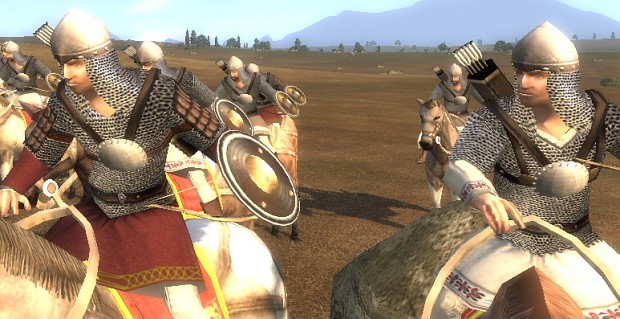
Calarasi (Light Cavalry) → Călăraşi form a part of the “oastea cea mica” (small host) and are part of the “slujitorii” (servants of the lord). Their name implies they fight on horseback. These soldiers were given land in exchange for military service, and retained their land so long as they remained as a readily-available force for the voievod, and exclusively in the service of the voievod. They are lightly armored, comparable to their curteni, and wield a composite bow. They were a very successful military instrument, remaining a significant part of the Wallachian army up until 1600, and form a potent counter to other horse archers.
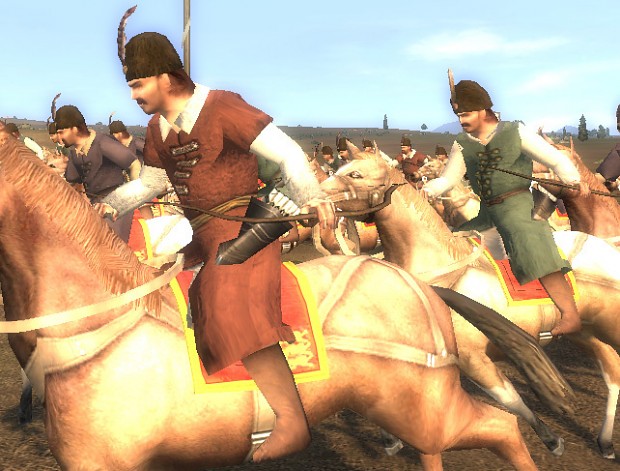
Curteni (Light cavalry) → Literally “Men of the Court” they are the retainers of the boyars whom he takes into battle on horseback. Historically, they acted as a small mounted detachment under the direct command of a boyar. They are not as competent as the Viteji, nor as fast as the Calarasi, but given the tradition of light cavalry in Wallachian armies, they are form a versatile screen for the Calarasi. Their armor is very light, though this aids in their speed. They wield a spear or a lance in battle, omitting the benefit of a ranged weapon in favor of a large shield. They can perform devastating charges repeatedly due to their light equipment, but should not be expected to hold off a well-armed opponent.
Nemesi (Heavy Cavalry) → Are the equivalent of the Viteji but armed with spears instead of bows. This will be the strongest cavalry unit before the Boyars and the Princely Bodyguard.
Princely Bodyguard (heavy cavalry) → The Voievod of Wallachia keeps at his side a bodyguard of warriors paid from his own coffers, either consisting of native troops or mercenaries. Only the most loyal boiers, often those serving on the princely court, were entrusted with protecting the voievod. These men are equipped with the finest arms and armor money can buy, often with platemail bought from Venice or other Italian cities. It was even said in a chronicle that the Wallachian voievod Vladislav-Vlaicu bought 10,000 suits of Venetian plate armor in anticipation of warfare against the Hungarians. These form the elite of Wallachian heavy cavalry.
Boyars → The boieri form the elite of Wallachian society and Wallachia’s heavy cavalry. They are the Wallachian nobles, who own vast swathes of land and rule over dependent peasants. Dressed in heavy armor, atop powerful mounts, and fighting in a style reminiscent of Western knights, they are a powerful force on the battlefield. The boieri however, are very accustomed to the game of political intrigue, and it is a telling fact that most of the Wallachian princes died of Wallachian swords and assassination than of old age, or on the field of battle. It is more telling that 20 princes were quickly cycled onto the Wallachian throne from 1418 to 1456, averaging to short and ineffective two-year reigns. The state of chaos caused by the boieri during this time was so great that when Vlad III Tepes came to power he immediately had many of then killed (some of whom had actually assassinated his father and his older brother Mircea), deposed others from the princely council (replacing them with obscure or foreign nobles) and tried to promote the land-owning Mosneni as a counter-weight against them. Even so, the Boiars would rebound after Vlad III’s death, becoming a powerful force. If a voievod can keep them satisfied and loyal, the boieri will form a decisive force on the battlefield and a much-needed unit of heavy, melee-based cavalry.

Portar → Literally “Gatekeeper”, the Portars are Moldavian heavily armored pikemen. The Romanian principalities relied mainly on hit and run tactics with light cavalry and archer units so the Portar will be a valueable anti-rush unit for defense.
Armas → The Wallachian counterpart of the Portar, these are the elite and most loyal infantry any voievod can have. Formed in the 15th century by Vlad Dracula and kept ever since, this powerful corps of infantry were used to counter-act the growing power of the Boyars, and are the only professional, non-mercenary force in the Wallachian army. Alongside their military role, they also act as a corps of gendarmes, keeping order in the country and upholding the voievod’s laws. They were the underlings of the Armas, a boyar who was a member of the Princely Council. They are professional soldiers, paid from the voievod’s coffers, and remain fiercely loyal to him. They are armed with halberds or other polearms, and dress in the best armors available. They are possibly the best-supplied footmen in the country.
Since most new factions now have 2 unique unit: the Romanians can have Portar as a unique upgrade to the Halberdier and something like Viteji for the castle. With the Castle UT being an upgrade for for the Knight like and the Imperial UT being an economic bonus.
